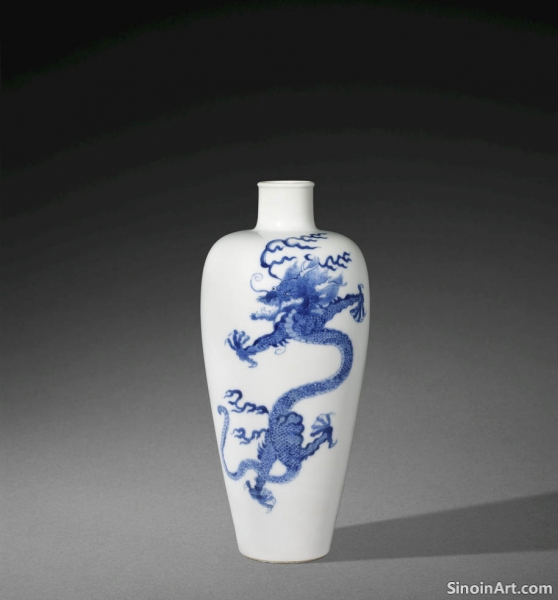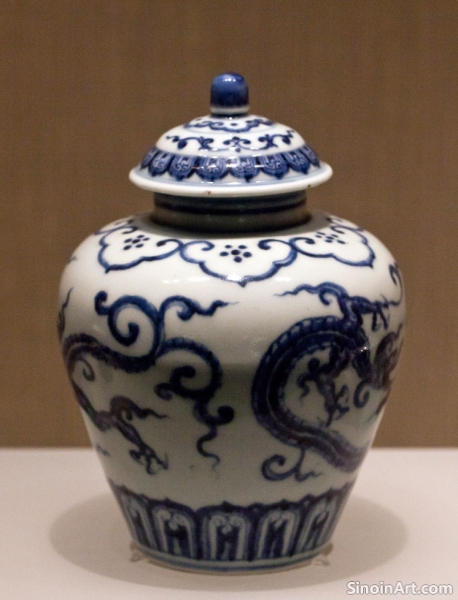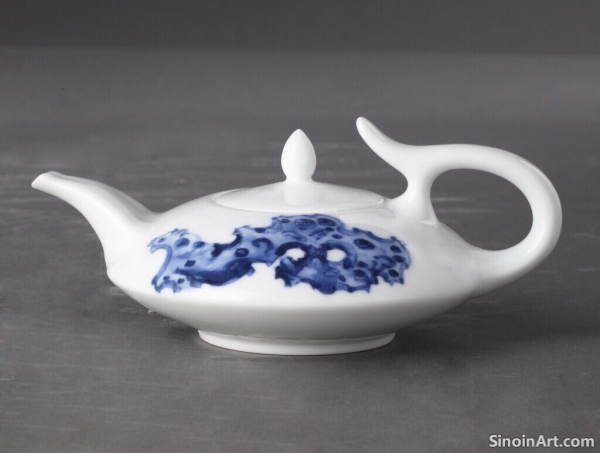The Forms and Shapes of Yuan Dynasty Ceramics
|
The forms and shapes of Yuan Dynasty ceramics are as distinctive as their decorative styles. Yuan vessels are known for their large sizes and robust construction. These objects were made for both practical use and to display prestige. The scale of the pottery production of the era was immense.  Large dishes, platters, and basins were a common feature of Yuan ceramic production. These were often decorated with intricate blue and white designs. These pieces reflect the social and economic scale of the Yuan era. They were both functional and highly decorative.  The "Meiping" vase, with its tall, slender shape, is a classic form that became prominent during the Yuan Dynasty. These vessels, often decorated with complex designs, were used for a variety of purposes, both domestic and ceremonial. The Meiping is an instantly recognizable piece of Yuan pottery.  Ewers, covered jars, and other vessels designed for practical use were also widely produced. These everyday objects were made to a high standard and were often decorated with care. Yuan potters created pieces for a range of functions. The forms of Yuan ceramics reflect both the functional needs of the society and the artistic preferences of the time. The scale and construction of these pieces show the dynamism and confidence of the era. The shapes are integral to the aesthetic impact of the era’s pottery. |
Tag : Yuan Dynasty forms, Ceramic shapes, Meiping vase, Chinese pottery, Yuan Dynasty vessels
Related information
- The Role of Trade Routes in Shaping Yuan Dynasty Porcelain Designs
- The Rise of Blue and White: Yuan Dynasty Porcelain's Groundbreaking Innovation
- Yuan Dynasty Porcelain in Museums and Collections: Accessing and Studying the Art
- The Influence of Yuan Dynasty Porcelain on Korean Ceramics
- The Cobalt Connection: The Sourcing and Impact of Blue Pigment in Yuan Porcelain
This article explores how the extensive trade routes of the Yuan Dynasty shaped the designs and motifs of its porcelain, highlighting the fusion of Chinese, Central Asian, and Islamic artistic influences.
The Yuan Dynasty (1271-1368) witnessed the groundbreaking introduction of blue and white porcelain. This article explores its robust forms, innovative designs, and lasting global impact, highlighting its revolutionary significance in the history of ceramics.
This article explores the locations of Yuan Dynasty porcelain in museums and collections worldwide. It highlights the importance of access for research and appreciation of this crucial aspect of Chinese art history.
This article explores the influence of Yuan Dynasty porcelain on Korean ceramics, particularly in the adoption of blue and white styles, the adaptation of forms and decorative motifs, and the development of unique Korean ceramic traditions.
This article delves into the importance of cobalt in Yuan porcelain, highlighting its import from Persia, its impact on color, and the technological skill needed to harness its full potential in ceramic production.